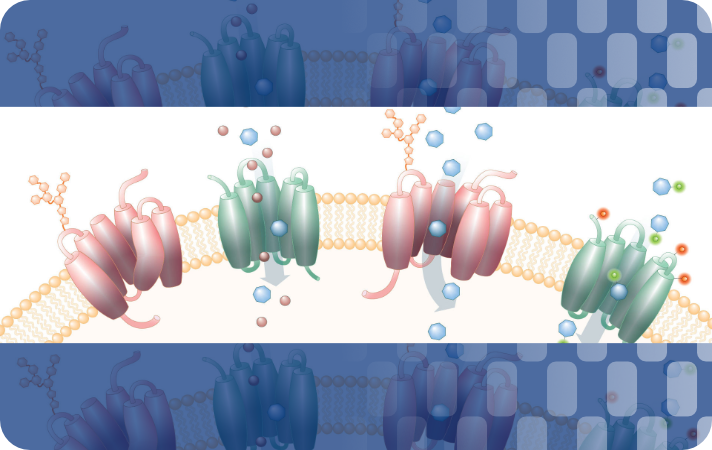Bringing lysosomal patch clamp recording to HTS
Science Spyglass High throughput organellar electrophysiology of TMEM175 and TPC2 from freshly isolated lysosomes recorded on the SyncroPatch 384 Application note Axxam S.p.A., MilanNanion Technologies GmbH, Munich Summary Intracellular ion channels are known to play an essential role in various signaling pathways for health and disease, considering that over 80% of transport processes occur inside the cells (1). Among the variety of organellar channels and transporters the proton leak channel transmembrane protein 175 (TMEM175) and the lysosomal two-pore channel (TPC) have received increasing attention in the field given their potential roles in connecting lysosomal homeostasis with pathophysiological conditions such as Parkinson’s disease and cancer (2-4). Consequently, the interest to explore intracellular ion channels as therapeutic targets has grown tremendously indicating a need for high-throughput electrophysiology including patch clamp. There has been some progress in alternative approaches such as solid supported membrane electrophysiology (SSME using the SURFE2R 96SE) recently (5), however, until now, HTS patch clamp has lacked the possibility to collect data from native lysosomes. Axxam and Nanion Technologies have now developed assays to investigate the function and pharmacology of lysosomal channels under native conditions, providing groundbreaking tools for the drug discovery industry. This is possible due to the development of special consumables (single- and multi-hole) dedicated to pursuing organellar recordings in combination with the high flexibility of the SyncroPatch 384 utilizing an ultra-low cell density approach that can use as low as 50k cells/ml, and small volumes of 1 ml for the whole of the 384-well plate, without a drastic reduction in success rate. This can be of extreme importance for expensive – as well as for samples of low quantity (cardiomyocytes, iPS cells or organelles) – to reduce costs and save time. Our approaches resulted in the construction of cumulative concentration response curves and even intraluminal solution exchange during the recording from freshly isolated lysosomes highlighting the broad range of applications possible with the SyncroPatch 384. ResultsTMEM175 Enlarged lysosomes incubated with 1 µM Vacuolin-1 were stained with 0.1 µM LysoTracker™ Red DND-99 (Invitrogen), a red fluorescent dye that stains acidic cellular compartments, such as lysosomes. The dye was added to the cells before isolation of the lysosomes and images were acquired at different magnifications and dilutions using the Operetta system (Perkin Elmer), resulting in an average diameter of 2.1 µm (Figure 1). Figure 1 A – Isolated lysosomes stained with LysoTracker™ Red DND-99 (Invitrogen); images at different magnifications were acquired using the Operetta (Perkin Elmer). B – Average diameter calculated at different dilutions: 3.0 ± 2.1 µm (1:10); 2.0 ± 1.3 µm (1:20); 2.4 ± 1.7 µm (1:50); data are presented as mean ± SD. The remaining lysosomes were used on the SyncroPatch 384 for recording TMEM175 channels expressed endogenously in HEK-293 cells. Critical for success was usage of Nanion’s “Organellar Chips”, a specialized consumable that supported and maintained the integrity of lysosomes throughout the recording and supported cumulative concentration response curves of DCPIB, a novel TMEM175 activator, able to mediate H+ and K+ currents (6) as highlighted in Figure 2. Since TMEM175 channels release luminal H+ into the cytosol, we developed assays using luminal solutions with different pH values, to enhance proton conductance, in addition to potassium flux. The seal resistance in “whole-lysosome” configuration was calculated before compound application and shows average values of 1.4 ± 0.2 GΩ and 2.1 ± 0.6 GΩ at pHluminal 4.0 and 7.0, respectively. TMEM175 activation was accompanied by a drop in Rseal, indicative for stimulation of a leak channel (Figure 2 A). We then executed cumulative concentration additions of DCPIB to activate endogenous TMEM175 channels using only part of the NPC-384 chip (32 wells per condition). Our analysis reveals an EC50 of 65.3 ± 17.5 µM (n=5) at pHluminal 4.0 and 21.5 ± 4.1 µM (n=3) at pHluminal 7.0 for outward currents (ion and proton flux from lumen to cytosol), as shown in Figure 2 D. Representative traces (Figure 2 B-C) clearly show a larger TMEM175 current evoked in the presence of the highest DCPIB concentration in an acidic luminal environment, suggesting enhanced proton flux at acidic luminal pH. Given the known pH dependence of TMEM175 activity (7) we also employed intraluminal solution exchange for the first time where we observed a current modulation after changes in luminal pH. During the experiment with pHluminal 7.0, TMEM175 current was first evoked by DCPIB application, then partially blocked by 4-AP (Figure 3 A). In the presence of 4-AP, acidification of the luminal solution, due to the internal exchange from pHluminal 7.0 to 4.0, increases TMEM175 current (Figure 3 B). A similar experiment was repeated by inverting the luminal pH, starting from 4.0 and changing to 7.0, using the internal perfusion feature of the SyncroPatch 384. In the presence of 4-AP, the reduction of H+ in the luminal solution induces a reduction in TMEM175 current due to a lower proton contribution (Figure 3 C-D). Figure 2 A – Bar graph of seal resistance calculated before and after DCPIB application. B – Representative traces recorded in control and in the presence of increasing concentrations of DCPIB, using luminal solution with pH 4.0, and C pH 7.0. D – Concentration response curve of DCPIB application using different luminal solution, with pH 4.0 (red) and 7.0 (black); in both experiments, cytosolic solutionwas pH 7.0. Figure 3 A – Representative TMEM175 traces recorded in control and in the presence of 100 µM DCPIB (light green) and 2 mM 4-AP (dark green); pHluminal 7.0 – pHcytosolic 7.0. B – Effect of luminal solution exchange (from pH 7.0 to pH 4.0) on TMEM175 current in the presence of 4-AP. C – Representative TMEM175 traces recorded in control and in the presence of 100 µM DCPIB (light green) and 2 mM 4-AP (dark green); pHluminal 4.0 – pHcytosolic 7.0. D – Effect of luminal solution exchange (from pH 4.0 to pH 7.0) on TMEM175 current in the presence of 4-AP. ResultsTPC2 Enlarged lysosomes (Vacuolin, 1 µM) were freshly isolated as described in Schieder et al (8-9) from HEK cells either stably
Bringing lysosomal patch clamp recording to HTS Read More »





